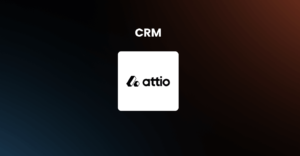Three years ago, we were still hand-stitching outbound.
Spreadsheets. Static templates. Spray-and-pray lists.
It worked, until it didn’t.
Fast-forward to 2025, and outbound is took a wild shift, not it’s more about intent. It’s about timing. And It’s about using frameworks that allows AI tools to do the heavy lifting
Outbound in 2025: A Hard Reset
Let’s be honest:
- People don’t trust cold emails anymore.
- Everyone’s inbox is a war zone.
- Templates are starting to sound the same.
This is actually called Inbox Fatigue
We’re seeing more unsubscribes. Less engagement. And a widening trust gap between prospects and outreach.
The Evolution of Outbound Marketing in the Age of AI
In the era of artificial intelligence, Outbound Marketing has increased its power tenfold. Everything we did before AI, we still do it, but 1000 times faster. Thanks to :
1. Automation :
AI enables end-to-end automation across content creation, campaign execution, and data analysis at a scale and speed that manual teams simply can’t match. It can enrich lead lists, optimize send times, and orchestrate outreach with remarkable precision.
Today, workflows can be fully automated: from lead nurturing, follow-ups, and even tagging responses are no longer manual tasks. AI agents handle sequencing, lead scoring, CRM updates, and more in real time.
Beyond that, automation connects every part of your stack from LinkedIn outreach to email, CRM, and Slack ensuring seamless transitions from first touch to handoff, with zero delay or duplication.
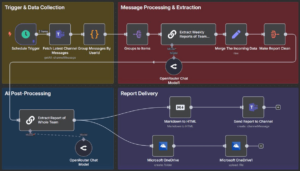
Image: This is an example of an automation workflow of a team that automatically updates their weekly report.

Image: Example of an Outreach Workflow from a case study of an actual client.
2. Personalization
Outbound in 2025 can’t rely on generic, templated messages. Prospects expect outreach that feels personal and relevant. That means knowing not just who they are but where they are in their buying journey.
AI tools now personalize outreach based on real-time intent signals on things like product page visits, content downloads, or social interactions.
Instead of “Hi [First Name], I saw you’re in marketing,” it’s: “Saw your team launched a new fintech campaign—here’s a playbook that helped a similar client boost demos by 28%.”
3. Understanding Buyer Intent
Buyer intent data shows who’s actively researching, what they care about, and when they’re most likely to engage. These signals come from repeated visits to product pages, webinar attendance, LinkedIn activity, and more.
When you reach out with clear context—relevant timing, pain points, and tailored content—you create value, not friction. Intent data also helps you prioritize efforts where there’s real opportunity.
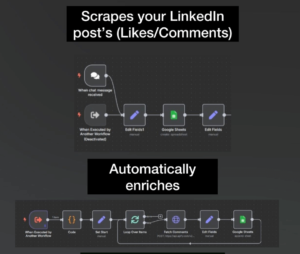
Image: How tools are now used to scrape social signal
4. AI SDRs
AI SDRs handle many of the tasks traditionally owned by human reps: prospecting, data enrichment, message personalization, follow-ups, and meeting scheduling. This technology doesn’t just augment reps, it automates the repetitive workflows that have historically drained their productivity.
Instead of spending hours qualifying leads or writing outreach emails, sales teams equipped with AI SDRs can scale their operations at a fraction of the cost and time. These agents analyze buyer data in real time, segment prospects based on behavior, and execute personalized outreach sequences across multiple channels.
Why It Matters
According to McKinsey, over 30% of companies are now using AI to boost marketing and sales. In sales development, the impact is already visible:
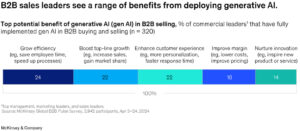
Source: McKinsey & Co.
- Lead Prospecting: AI SDRs gather and enrich lead data within seconds, automating research and targeting.
- Prioritization: By scoring leads using real-time intent signals, AI SDRs focus outreach where conversion likelihood is highest.
- Email and LinkedIn Personalization: AI systems generate highly contextual messages by analyzing previous interactions and firmographics.
- Conversation Intelligence: AI tools like Gong or Avoma transcribe, analyze, and surface insights from calls—fueling smarter follow-ups.
Working Side-by-Side with Humans
While AI SDRs can execute flawlessly at scale, they lack emotional intelligence.
That’s why leading sales teams deploy a hybrid model:
- AI handles repetitive, structured tasks: enrichment, outreach, reminders, scheduling.
- Human SDRs focus on high-touch moments: objection handling, nurturing key accounts, and building trust.
This combo doesn’t replace reps, it empowers them. The future of sales isn’t human or AI. It’s human and AI, working together to accelerate pipeline and close deals smarter..
Using AI, SDRs can now find deep down details including:
- Prospect research
- Social signals
- First-touch email writing
- Lead qualification
- Meeting scheduling
They operate 24/7, never fatigue, and improve with each interaction. For high-volume or transactional sales environments, AI SDRs are proving 3-5x more cost-efficient than traditional teams.
Benefits of Adopting AI in SDR Roles
Companies embracing AI in their SDR function are seeing:
- 70% reduction in manual tasks
- 50% improvement in lead time
- Lower CAC with leaner teams
So AI isn’t really replacing SDRs, it’s amplifying them. Human reps are focusing on high-stakes conversations while AI handles the groundwork.
Tools Powering Outbound in 2025
There’s a new generation of outbound tools doing the heavy lifting—automating workflows, enriching data, tracking signals, and delivering personalized outreach across channels.
Here are some of the tools reshaping outbound in 2025:
Outreach Automation
Tools: Lemlist, Instantly, Smartlead

What they do: Build multi channel sequences, personalize at scale, automate follow-ups
CRM
Tool: Attio
Functionality: Keep pipeline clean, log every touchpoint, sync meetings and outreach workflow
Data Enrichment
Tool: Persana AI, Clay
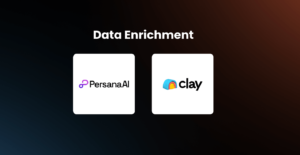
What they do: Enrich contact profiles with firmographics, intent signals, and buying behavior.
Workflow Automation
Tool: n8n, Make.com
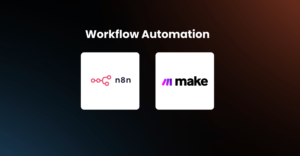
What they do: Builds custom logic and AI agent workflow.
Final Word: The Playbook Has Changed
The old outbound playbook is gone.
Generic templates and cold emails without context no longer cut it.
Modern outbound is automated, precise, and personal.
Every touchpoint is timely. Every signal matters.
It’s no longer about sending more,
It’s about sending the right signal to the right person, at the right time, with the least friction possible.


